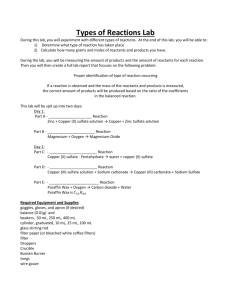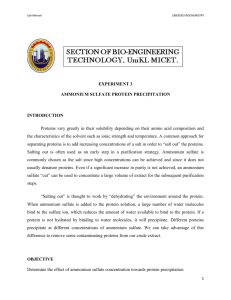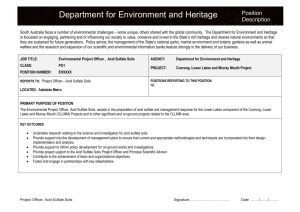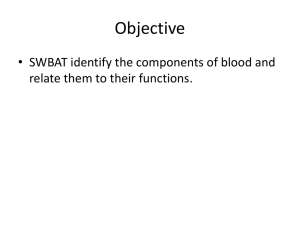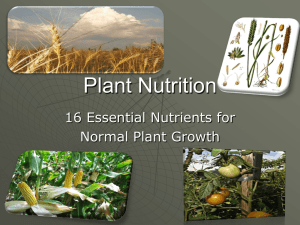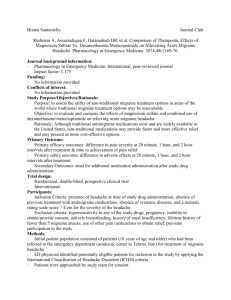SAPS - 4 Making and testing nutrients
advertisement
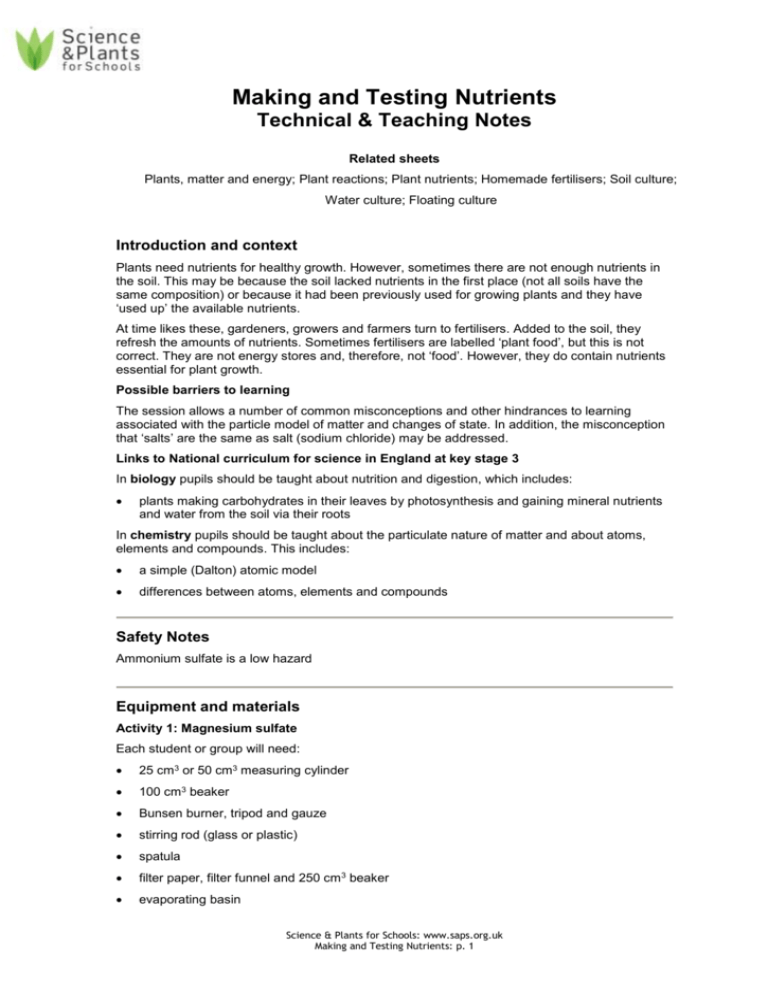
Making and Testing Nutrients Technical & Teaching Notes Related sheets Plants, matter and energy; Plant reactions; Plant nutrients; Homemade fertilisers; Soil culture; Water culture; Floating culture Introduction and context Plants need nutrients for healthy growth. However, sometimes there are not enough nutrients in the soil. This may be because the soil lacked nutrients in the first place (not all soils have the same composition) or because it had been previously used for growing plants and they have ‘used up’ the available nutrients. At time likes these, gardeners, growers and farmers turn to fertilisers. Added to the soil, they refresh the amounts of nutrients. Sometimes fertilisers are labelled ‘plant food’, but this is not correct. They are not energy stores and, therefore, not ‘food’. However, they do contain nutrients essential for plant growth. Possible barriers to learning The session allows a number of common misconceptions and other hindrances to learning associated with the particle model of matter and changes of state. In addition, the misconception that ‘salts’ are the same as salt (sodium chloride) may be addressed. Links to National curriculum for science in England at key stage 3 In biology pupils should be taught about nutrition and digestion, which includes: plants making carbohydrates in their leaves by photosynthesis and gaining mineral nutrients and water from the soil via their roots In chemistry pupils should be taught about the particulate nature of matter and about atoms, elements and compounds. This includes: a simple (Dalton) atomic model differences between atoms, elements and compounds Safety Notes Ammonium sulfate is a low hazard Equipment and materials Activity 1: Magnesium sulfate Each student or group will need: 25 cm3 or 50 cm3 measuring cylinder 100 cm3 beaker Bunsen burner, tripod and gauze stirring rod (glass or plastic) spatula filter paper, filter funnel and 250 cm 3 beaker evaporating basin Science & Plants for Schools: www.saps.org.uk Making and Testing Nutrients: p. 1 0.5 mol dm-3 sulfuric acid about 1 g basic magnesium carbonate, 3MgCO3.Mg(OH)2.3H2O(s) Activity 2: Ammonium sulfate Each student or group will need: 2 x 25 cm3 or 50 cm3 measuring cylinder evaporating basin Bunsen burner, tripod and gauze stirring rod (glass or plastic) dropping pipette Universal indicator paper filter paper, filter funnel and 250 cm 3 beaker 1 mol dm-3 sulfuric acid 2 mol dm-3 ammonia solution Activity 3: Testing the nutrient Students are asked to plan an experiment. However, you may want them to try it out. In which case the equipment and materials needed by each student or group depends on the method they choose. For further information see the following sheets (in each case, the student and teacher sheets): Soil Culture; Water Culture; Floating Culture. Teaching Notes Activity 1: Making magnesium sulfate Magnesium sulfate can be bought as Epsom salts, though its everyday use has diminished and students may not come across them. Students may need guidance. You may want to demonstrate some of the stages so that students are clear about the techniques being used. For example: using the correct Bunsen burner flame slow evaporation of a solution (you might comment on the fact that as well as the safety consideration – avoiding spitting – slow evaporation produces larger crystals) folding a filter paper and setting up for filtration (though slightly more fiddly to fold, fluted filter paper is better than the traditional cone because (a) filtration is quicker, (b) the fluted filter paper opens more easily to be laid on a watch glass) Answers 1. Students should obtain colourless crystals, though they may appear white if the crystals are small. 2. Carbon dioxide 3. MgCO3 + H2SO4 MgSO4 + CO2 + H2O 4. Magnesium ions, Mg2+, and sulfate ions, SO42-. Science & Plants for Schools: www.saps.org.uk Making and Testing Nutrients: p. 2 Activity 2: Making ammonium sulfate Again, students may need guidance. See Part 1: Making magnesium sulfate. Answers 1. Students should obtain colourless crystals, though they may appear white if the crystals are small. 2. 2NH3 + H2SO4 (NH4)2SO4 3. pH 7 4. Ammonium ions, NH4+, and sulfate ions, SO42-. 5. Ammonium sulfate decomposes if heated strongly, producing ammonia gas and sulfuric acid vapour. These are extremely hazardous. Activity 3: Testing the nutrient This is predominately a planning exercise, but if time allows you could ask students to carry out their planned investigation, having first checked them and carried out a risk assessment. Answers 1. (a) Magnesium sulfate provides magnesium and sulfur, (b) Ammonium sulfate provides nitrogen and sulfur. 2. Students will need to consult books or search the internet. Magnesium: for making chlorophyll; if deficient, leaves turn yellow. Sulfur: various uses, including making amino acids, proteins, oils, chlorophyll, enzymes and vitamins; if deficient leaves become reddish and may become brittle. Nitrogen: for making amino acids and, from these, proteins; if deficient plant growth is stunted. 3. The investigation should list the materials and equipment needed, health and safety guidance, instructions for carrying it out, and instructions for interpreting results. Note: Students should be offered guidance and support, the amount depending on students’ experience and progress. Science & Plants for Schools: www.saps.org.uk Making and Testing Nutrients: p. 3





